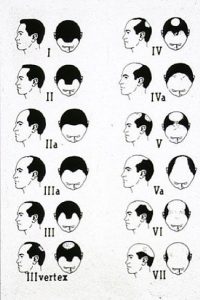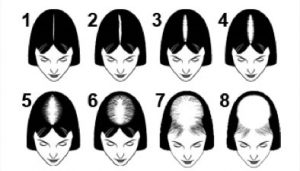Hair Loss Facts

Reasons for hair loss
Throughout the ages, healthy hair has always been a sign of vitality and physical attraction for both men and women. Today’s competitive job market seems to lean towards candidates of a younger status, and studies have shown that attractiveness positively impacts one’s earning potential. Therefore, the loss of hair can be detrimental not only to one’s self-image but can also involve many other social and economic factors as well. According to the American Academy of Dermatology, hair loss affects over 50 million men and 30 million women in the United States alone, with hair loss an issue for both sexes.
Common factors in hair loss
While there are many reasons for short or long-term hair loss, some of the most common factors are hormonal changes, aging, diet, illness, medications, genetics, and stress. Unfortunately, some of these reasons are out of your control.
Determining the cause of hair loss is a good start in finding the solution that best suits your needs. A New York hair loss specialist can help you determine the reason for your hair loss and give you back the hairline of your youth.

The hair growth and shedding cycle
Hair is considered part of your skin and has three specific cycles: anagen (growth phase), catagen (short transitional phase), and telogen (resting phase). At any given time, about 90 percent of your hair is in the anagen phase, which lasts roughly three years.
The remaining 10 percent of your hair is in the telogen phase (lasting three to five months), which is when the follicle sheds. Your hair grows in groups called “follicular units”, which is a grouping of strands. As an average, each follicular unit produces one to four. An average head contains about 100,000 hair follicles, and hair grows about half an inch a month. For Caucasians, it’s considered normal to lose about 100 hairs a day, Asians lose about 80 to 120 hairs a day, and African Americans lose between 60 to 100 hairs a day.
Most common causes of male hair loss
The most common cause of hair loss for males is androgenic alopecia, otherwise known as “male pattern baldness”. This cause is due to the male hormone dihydrotestosterone (DHT) acting on genetically susceptible scalp hair follicles that caused them to become progressively smaller and eventually disappear. This process is called “miniaturization”.
DHT causes male hair loss by shortening the growth or anagen phase of the hair, causing the decreased size of the hair follicles, and producing progressively shorter, finer hairs. Eventually, these hairs disappear. This sensitivity to DHT is characteristic of hair follicles positioned at the front, crown, and top of the scalp, rather than at the back and sides.
Female hair loss
For females, there are many different reasons for hair loss, this includes:
- Genetic female pattern hair loss
- Hormonal changes
- Iron deficiency
- Medication use with included side effects
- Thyroid disease
- Weight loss
Menopause We always screen women with blood tests for nutritional and hormonal imbalances that can lead to hair loss before any decision about surgical hair restoration. In female pattern baldness, there is a progression from the middle of the scalp outwards, as shown below.


